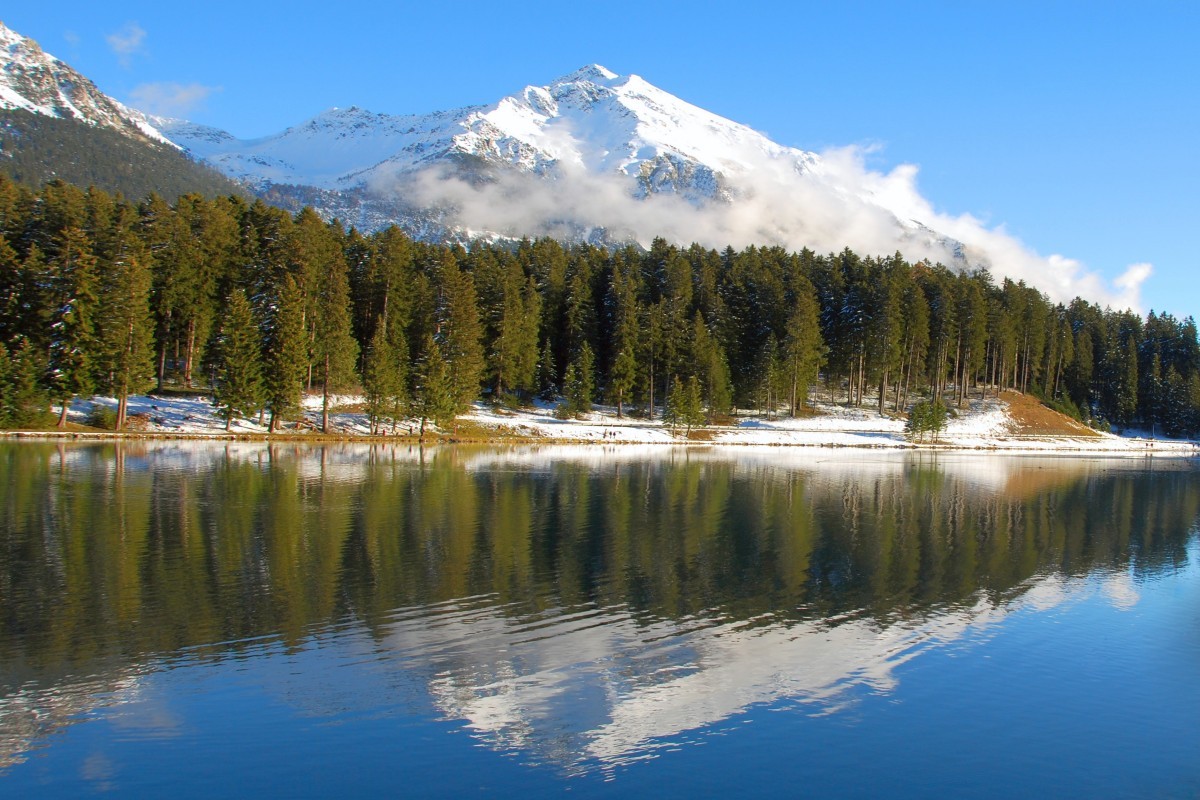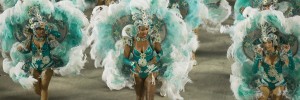Perhaps you have wondered, as a joke, or more seriously, why you should learn something about Switzerland. Or more: what would arouse interest? Well, I want you to see this country differently, perhaps through eyes of a child. (By the way, are you among those who saw “Heidi”?)
Sure, “the cantons country” is famous for many things, from watches (mechanical gems) to cheese (about 450 varieties). It is full of beautiful landscapes, especially mountains, which are reflected in the numerous lakes (more than 1500). The picturesque and modern intertwine. To conclude, the dream of every tourist! And when you hear “chocolate”, the Swiss ones certainly come to mind – tons are produced every year. My mouth is already watering!
But there are many other things about this country that are not known. And some will make you open your eyes, mouth, and… mind!
On this page:
Welcome to Babylon!
The country code for Switzerland is CH. Strange, is it not? You start to think about what they call it in different languages: Schweiz in German, Suisse in French, Svizzera in Italian, etc. Either way you say it, no trace of CH. The explanation is simple, but unique: the official name of the country is Confoederatio Helvetica 1)”Capitalism, The Swiss Model” by Alan W. Ertl, book published at Author House in 2014. Guess what language this is?
Latin!
In fact, Latin is still used in Switzerland, even if you don’t hear it on every street corner. In a linguistic “Babylon”, a neutral solution was needed, especially in a country with a long tradition of neutrality. However, Esperanto appeared too late, they chose Latin for situations in which you must reconcile all. Otherwise it would not be possible, because there are already four official languages: German (actually a dialect), French, Italian, and Rhaeto-Romanic. (Gossipers will say that the latter is more special, because Rhaeto-Romanic, a rare language, is very close to Latin.)
But in what language do Swiss people from different parts of the country use to communicate with one another? You might think that in a country where many languages are spoken, people are multilingual. In fact, they speak as tourists do: usually in English.
Who Do You Know in Switzerland?
Now, quickly name off some famous Swiss! Come on, I’ve got you locked…
If you like tennis, you’re lucky. Sure you know Roger Federer (best tennis player of all the times) and Martina Hinghis (world leader for many years)…

But this will surprise you: actress Ursula Andress, the first “Bond girl” is Swiss. Her role as Honey Rider in “Dr. No” is anthological for all the fans of agent 007. And another thing: even James Bond’s mother is Swiss 2)”Ian Fleming’s James Bond: Annotations and Chronologies for Ian Fleming’s Bond Stories” by John Griswold, book published by Author House in 2006!
Architecture is a strong point (it couldn’t be otherwise on a challenging land). Architects such as Charles-Édouard Jeanneret- Gris (known as Le Corbusier), Mario Botta, and Max Frisch are recognized worldwide.
Among the people of these places are names that have remained in the history of science: Bernoulli, Euler, etc. And even if only by adoption, the most famous scientist Albert Einstein is Swiss, he held citizenship with this country more than any other, though born in Germany.
Like No One Else
It is said that in Switzerland there are more banks than dentists. And there is absolutely no reference to the banks along rivers. It is well known to have one of the most developed banking systems. But I think that you do not understand exactly what that means. In 1990, they had 495 banks! And even if this number decreased, there is still plenty more 3)”Western Europe 2013” by Wayne C. Thompson, book published by Rowman & Littlefield in 2013.
Mailboxes have two slots: one for letters and the other for packages. The system is designed to better protect the letters that are considered more important.
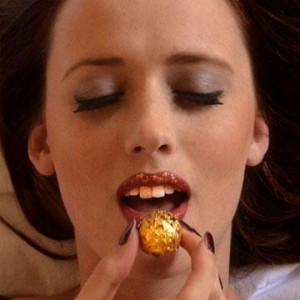
Swiss’ interest for chocolate appeared in 1800. Seeing the potential market, they began to develop a whole industry. Soon they began to innovate. So they created milk chocolate, chocolate bars, and other refinements 4)”Frommer’s Switzerland” by Darwin Porter and Danforth Prince, book published by Frommers in 2012. Although it seems that there is nothing new to do in the area, do not give up. What do you think a Swiss chocolatier thought?! How to make chocolate even more precious? He mixed cocoa butter with gold dust to create, essentially, edible gold.
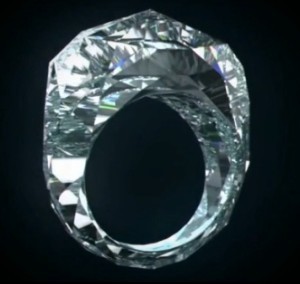
A Swiss jeweler managed to create a ring worth 68 million dollars, composed entirely of a 150 carat diamond. No traces of gold or any other materials 5)”Diamond ring made ENTIRELY out of bling; 150-carat bauble could fetch $68M” by Lindsay Goldwert, article published by Daily News on March 23, 2012. Now, that’s a ring! If you go out with it on the street, you will need some special troops with you.
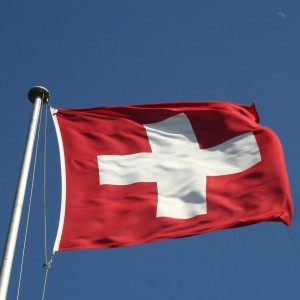
Let’s talk about the flag: besides the one of Vatican, the Swiss flag is among two such state symbols that have the shape of a square 6)”Complete Flags of the World“, encyclopedia published by DK Publishing in 2014. They do, however, make an exception for crafts traveling on the lakes; their flags are rectangular.
The flag of the Red Cross organization is similar – only the colors are reversed. And not by accident. This organization has its roots in Switzerland 7)”International Red Cross and Red Crescent Movement” in Wikipedia.
Where’s the Law, They’re Not Bargaining
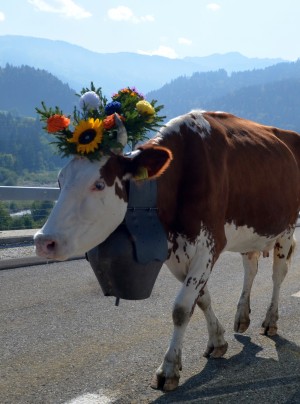
In Switzerland, by law, if you rent a cow, all the milk and cheese products made during this time will belong to you. (Can you think of another reason to rent a cow?!)
If you live in this country and feel that it would be nice to have a guinea pig or a goldfish, you should know it is not possible. You must have at least two, otherwise you will be considered a “beast with a human face” and you will bear the rigors of the law. The law applies to all “social animals”. That means those who do not like to live alone. And if you do well with small animals, behold even horses are included in this category 8)”Globalization and Animal Law: Comparative Law, International Law, and International Trade” by Thomas G. Kelch, book published by Kluwer Law International in 20119)”Hope for Lonely Rodents: Rent-A-Guinea Pig Service Takes Off in Switzerland” by Jens Witte, article published in Spiegel on September 20, 2011!
In fact, the Swiss are very concerned about animal welfare. For example, Antoine Goetschel is a lawyer who represents animals in court. He took a fisherman to trial because it took too long to pull a pike out of the water. The basic idea, I think, is simple: if you are not good at fishing, stay home 10)”The lawyer who defends animals” by Leo Hickman, article published in The Guardian on March 5, 2010!
But animals have not always been so protected. In 1471, in Basel, a chicken laid an egg that was very colorful. The case went to trial, and the chicken was accused of being the devil. It was found guilty and burned at the stake 11)”A Pilgrim’s Almanac: Reflections for Each Day of the Year” by Edward Hays, book published by Ave Maria Press in 1989. Wouldn’t it be better if they prepared a barbecue?!
The Swiss are equally concerned with people. Among others, they have a law banning Holocaust denial. Similar laws exist in other countries, such as France, Iran, and Syria 12)”Holocaust denial” in Wikipedia. People do not want to hear ridiculous comments anymore.
And if you have heard of this, and somehow you thought it was a joke, well, in Switzerland there is a political party that is called the Anti PowerPoint Party. It has a noble goal: reducing the number of PowerPoint presentations and replacing them with classic presentation flip charts. The party has not been set up by chance in this country: here the law allows anyone in the world to become a member of a party. Even without paying a fee. This is why that amazing party came to be among the largest in the country in number of members!
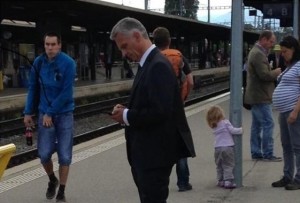
Perhaps the greatest thing about Switzerland is the central management. The governing body is the Federal Council – as they call the government. Its leader is appointed for a period of one year, by rotation of the seven members of the Council. They have both the role of prime minister and president, representing the country in any official situation. But the really interesting part is yet to come: even if they have a good salary, Council members do not receive benefits, such as a protocol home. If they are staying at a hotel, they have to pay for their hotel stay with their own money. They have the right to request a bodyguard, but they rarely do. You can see them, like any ordinary person, walking down the street, or on the tram, train, etc. Now that’s democracy!
Army Defends the Country! But Who Defends It?!
One of the special features is the neutrality of Switzerland. The country did not participate in any armed conflict for centuries. The last battle took place back in 1505!
However, they have an army! A well-equipped army at that. For example, fighter jets that reach supersonic speeds. But where to fly with such speed in a small country?! You can fly from one end to the other in 7 minutes, without taking into account the rise to over 10,000 feet, acceleration, etc. To somehow solve the situation, Switzerland has agreements with countries, such as Sweden, Italy, and France, in order to use their airspace for training flights 13)”The Swiss Air Power: Wherefrom? Whereto?” by Fiona Lombardi, book published by vdf Hochschulverlag AG in 2007.
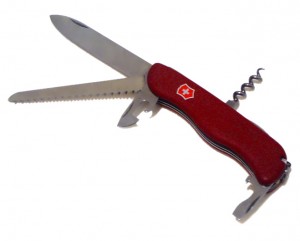
But the Swiss army was not always so well-equipped. In 1890, the soldiers were excited because they received… penknives. They became famous worldwide after World War II; American soldiers baptizing them “Swiss Army Knife”. They are usually the same color red as the Swiss flag, with a white cross at one end; the color is practical, which helps you to not lose it in the snow, etc. Although, as a weapon, it is an embarrassment, it is a very useful multifunctional tool with many fans worldwide.
One of the strategies of defense for this State is blocking access to the country in key locations, such as bridges and tunnels. In the Middle Ages, elsewhere, they set fire to the grain and poisoned the wells. Swiss apply the same principle, but they have modernized and adapted it to the specific sites. Around 3000 people are ready at any moment to trigger an explosion, to collapse a bridge or to cause a landslide over a road. Tunnels can be sealed and can serve as a shelter in case of a nuclear attack 14)”La Place de la Concorde Suisse” by John McPhee, book published by Farrar, Straus and Giroux in 1984 and reedited in 1994.
But the tunnels are not the only shelters. Where do you think the Swiss are hiding when they need shelter? In bunkers that look like cottages, situated in the middle of the village. These are supplied with food and the every day necessities. They even have artillery units!
Swiss precision is renowned worldwide. To them, everything and everyone is always on the watch! Well, almost everything. The Swiss Army apparently is not as accurate. For example, they invaded Liechtenstein… by mistake. In 2007, 170 soldiers were lost at night in a workout, and after a while they realized they were a few miles into the neighboring state 15)”Not-so-precise Swiss army unit mistakenly invades Liechtenstein” – news from CBC News on March 2, 2007. Making fun of this situation, I can say they have precision: they hit one of the smallest countries in the world! If they entered another neighbor, emotions would have been higher.
When Life Blends with Art
The capital of this country is Bern and not Zürich, as you might have guessed.
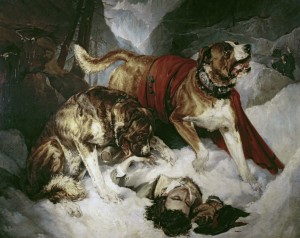
Zürich is by far the largest city in the country. According to some assessments, the number 1 city in the ranking of localities with the best standard of living. And not only in Switzerland, but throughout Europe! If you can afford it, here is where you want to move. About 30% of the population does not have Swiss citizenship. Perhaps, dogs walk with pretzels on their tails more here than in Paris! Oh, wait – As I’ve only ever seen in the movies, their dogs walk with small barrels of brandy around their neck, to help travelers in need. That could explain a few things. But – I am sorry to spoil your fun – it’s just a myth. English painter Edwin Landseer, when he was only 17 years old, invented this for his painting. The idea made the imagination of many ardent, being used in novels, movies, etc., but has no real basis. If you see such a dog, it is only for artistic effect. Or tourism.
But I digress too much, back to Zurich. At a count, there were 1224 wells found. Here is the biggest clock built on a church in Europe: 8.7 meters in diameter 16)”Switzerland without a Car” by Anthony Lambert, book published by Bradt Travel Guides in 2013.
Geneva prides itself on having the tallest water fountain in the world Jet d’Eau. Amazingly powerful pumps suck in the water from a lake to jet it at 140 m high. A sky-scrapper of water! It’s pretty clear that the Swiss are not tight-fisted, because you don’t want to know the cost of the water bill for this toy. The flow rate is 500 litres/second, the jet reaching up to 200 km/h. 7 tons of water is being thrown into the air every moment 17)”Jet d’Eau” in Wikipedia!
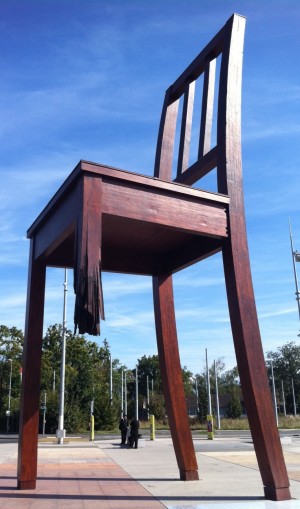
Also in Geneva, there is a huge sculpture shaped like a seat. It has 3 whole feet and a fourth broken in half, recalling, metaphorically, the effects of land mines for those who survive them. It is considered, by some critics, the most representative sculpture of the XXI century. With a height of 12 meters, it manages to be imposing, amplifying the message forcefully 18)”Disarming States: The International Movement to Ban Landmines” dby Ken Rutherford, book published by Praeger in 2010.
And while I am talking about statues, it is noteworthy to tell you about a statue-fountain placed in the center of Bern, over 500 years old. Why visit it? Besides the fact that it dominated for lots of years in a city so nice, it embodies a man who eats kids. And this is how you call it: “Kindlifresser” (“eater of children”). This idea can also refer to Goya’s famous painting, “Saturn devouring his children.” However, no one knows why this extremely sinister statue was built.
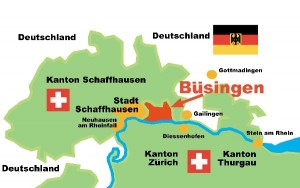
There is certainly something strange about Büsingen town. Everywhere around Büsingen is Switzerland. What is interesting about this? Well, this town belongs to Germany. And although Germany is a member of the European Union, this village remains outside. Moreover, its inhabitants use the Swiss franc as their currency. There is no charge for coffee, which normally would cost around 2.2 € / kg. It has two zip codes: one for Germany and one for Switzerland. On the license plates of cars is the abbreviation Bús, although the city is part of the district of Constance, which has a different abbreviation, KN 19)”Büsingen am Hochrhein” in Wikipedia.
Located between Martigny and Sion in Valais, is the smallest vineyard in the world: only 1.6 square meters. You would think that the poorest man in the world owns it. Or even the laziest. Since this is Switzerland, these assumptions do not seem to fit. In fact, it belongs to one of the richest people – spiritually speaking – namely Dalai Lama. He declared himself in love with Switzerland. Where else could you find a realm more peaceful than here?
In case all that is said here does not convince you, with kind words, that it’s good to be peaceful, let’s not forget, however, that the Swiss are people of the mountains. In certain regions, Samichlaus (St. Nicholas) is the one who brings the presents during the winter holiday. The local version of the legend says that he is accompanied by a dark-looking man. He is in charge of beating the naughty children with a switch. The German speaking people call him Schmutzli, which can be translated as Dirty. In French they call him Père Fouettard. Anyway, these days he is too busy sharing gingerbread and tangerines 20)”Schmutzli: the Swiss Santa’s sinister sidekick de Morven McLean, article published in Swissinfo on December 5th 2008.
These are some great things that can be said about Switzerland. There would be many more, but better escape up there to see for yourself!
Everything you wanted to know about Carnival in Rio de Janeiro and much more surprising information (with pictures, of course)
References
| ↑1 | ”Capitalism, The Swiss Model” by Alan W. Ertl, book published at Author House in 2014 |
|---|---|
| ↑2 | ”Ian Fleming’s James Bond: Annotations and Chronologies for Ian Fleming’s Bond Stories” by John Griswold, book published by Author House in 2006 |
| ↑3 | ”Western Europe 2013” by Wayne C. Thompson, book published by Rowman & Littlefield in 2013 |
| ↑4 | ”Frommer’s Switzerland” by Darwin Porter and Danforth Prince, book published by Frommers in 2012 |
| ↑5 | ”Diamond ring made ENTIRELY out of bling; 150-carat bauble could fetch $68M” by Lindsay Goldwert, article published by Daily News on March 23, 2012 |
| ↑6 | ”Complete Flags of the World“, encyclopedia published by DK Publishing in 2014 |
| ↑7 | ”International Red Cross and Red Crescent Movement” in Wikipedia |
| ↑8 | ”Globalization and Animal Law: Comparative Law, International Law, and International Trade” by Thomas G. Kelch, book published by Kluwer Law International in 2011 |
| ↑9 | ”Hope for Lonely Rodents: Rent-A-Guinea Pig Service Takes Off in Switzerland” by Jens Witte, article published in Spiegel on September 20, 2011 |
| ↑10 | ”The lawyer who defends animals” by Leo Hickman, article published in The Guardian on March 5, 2010 |
| ↑11 | ”A Pilgrim’s Almanac: Reflections for Each Day of the Year” by Edward Hays, book published by Ave Maria Press in 1989 |
| ↑12 | ”Holocaust denial” in Wikipedia |
| ↑13 | ”The Swiss Air Power: Wherefrom? Whereto?” by Fiona Lombardi, book published by vdf Hochschulverlag AG in 2007 |
| ↑14 | ”La Place de la Concorde Suisse” by John McPhee, book published by Farrar, Straus and Giroux in 1984 and reedited in 1994 |
| ↑15 | ”Not-so-precise Swiss army unit mistakenly invades Liechtenstein” – news from CBC News on March 2, 2007 |
| ↑16 | ”Switzerland without a Car” by Anthony Lambert, book published by Bradt Travel Guides in 2013 |
| ↑17 | ”Jet d’Eau” in Wikipedia |
| ↑18 | ”Disarming States: The International Movement to Ban Landmines” dby Ken Rutherford, book published by Praeger in 2010 |
| ↑19 | ”Büsingen am Hochrhein” in Wikipedia |
| ↑20 | ”Schmutzli: the Swiss Santa’s sinister sidekick de Morven McLean, article published in Swissinfo on December 5th 2008 |
Did you like it? Now it’s your turn. You’ll make us very happy if you share this article with your friends:
And don’t forget to let us know what you think – we are really interested in your thoughts on this!



